HTC One S Review - International and T-Mobile
by Brian Klug on July 17, 2012 9:30 AM ESTBoth the HTC One S and One X ship with the combination of both Android 4.0.3 and HTC’s Sense 4. I’ve talked in the HTC One X AT&T review about how I feel about Sense 4, and think it strikes a pretty good balance between feeling ICS-ey, and the customizations added by HTC which are HTC Sense. The issue with previous versions was always that there was just too much custom stuff everywhere - Sense 4 scales that back, but it’s still ultimately a skin.
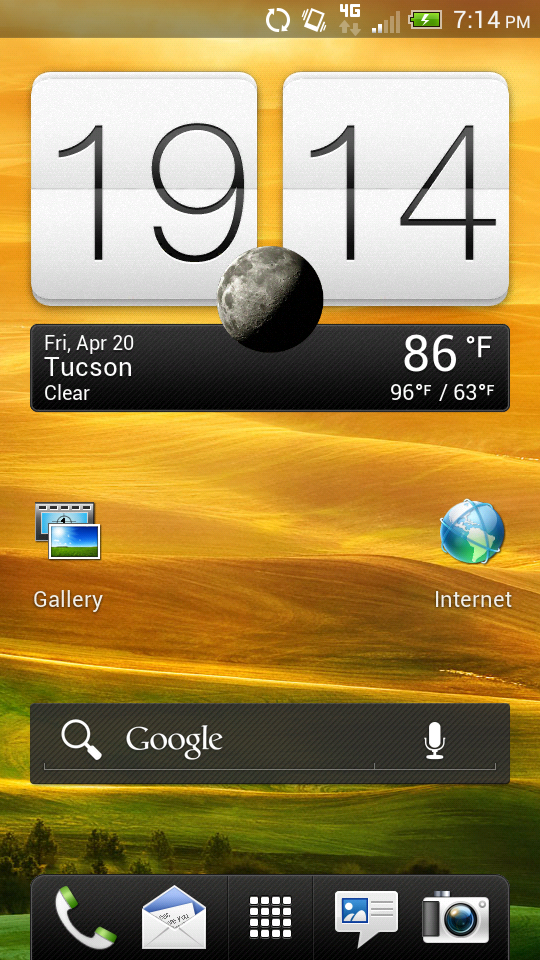

The places that see the most Sense 4 customization are the homescreens (obviously), lock screen, settings pages, launcher, browser, and task switcher. Adding quick shortcuts to the lock screen (in addition to a few other optional modes) is handy, and these shortcuts get inherited from the bottom row of application shortcuts on the home screen.
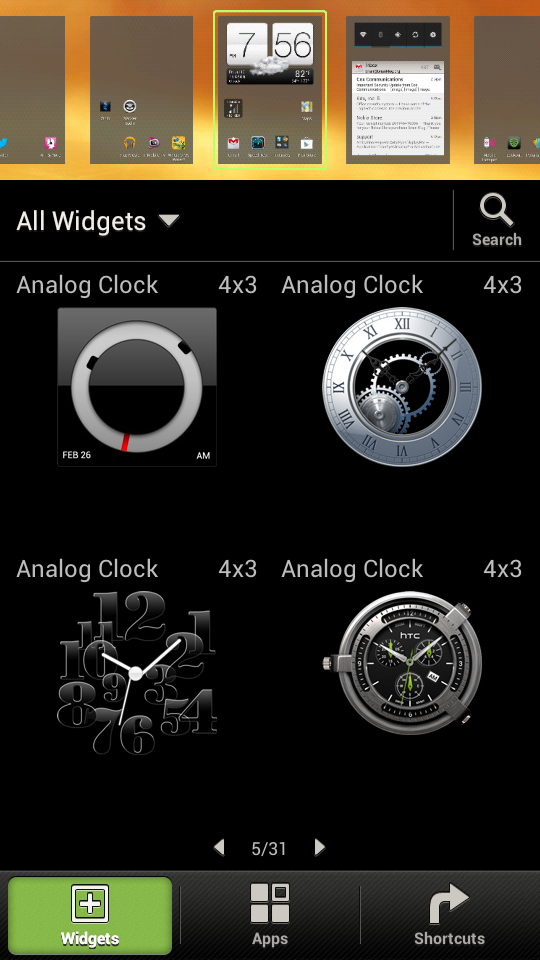
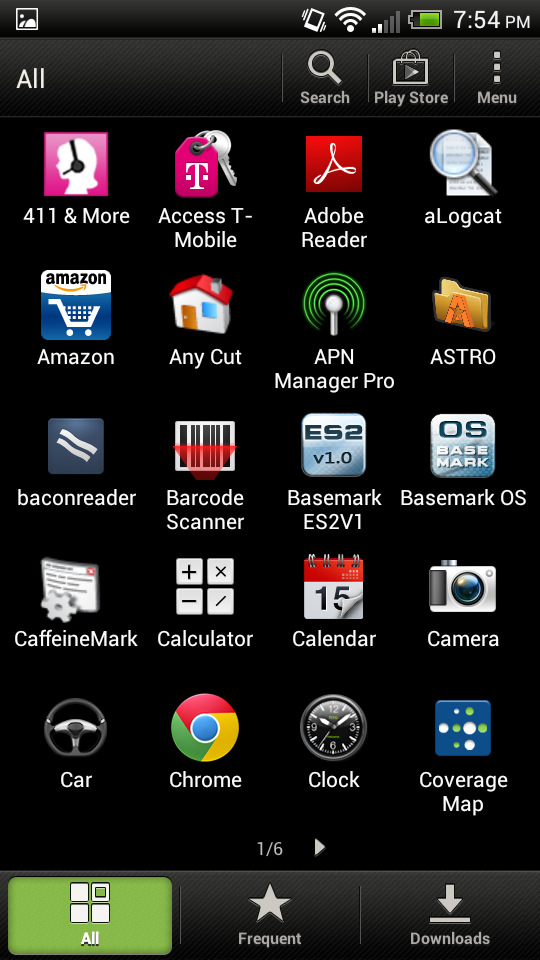
The home screen is an obvious evolution of previous Sense launchers, and includes a 3D cube effect upon rotation, a number of custom widgets in addition to the stock widgets, and the ability to rearrange pages. The launcher is paginated and scrolls left or right.

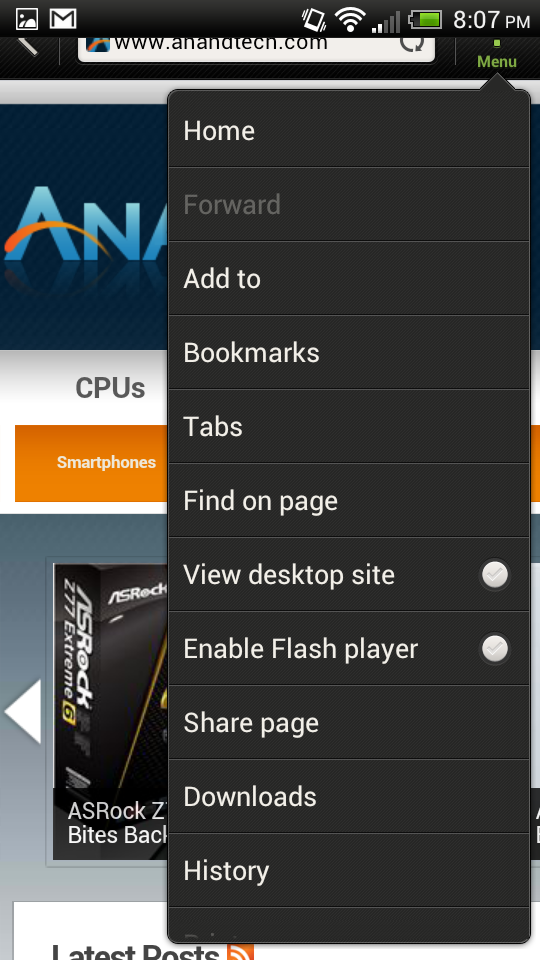
I also like HTC’s keyboard this time around. It strikes a nice balance between still feeling like the stock keyboard and adding a different look and feel which matches the rest of Sense 4.
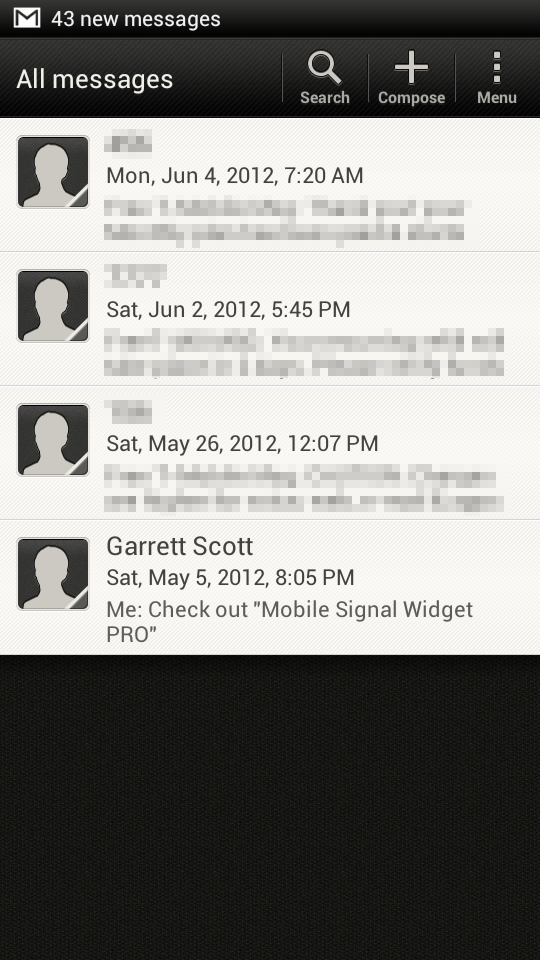
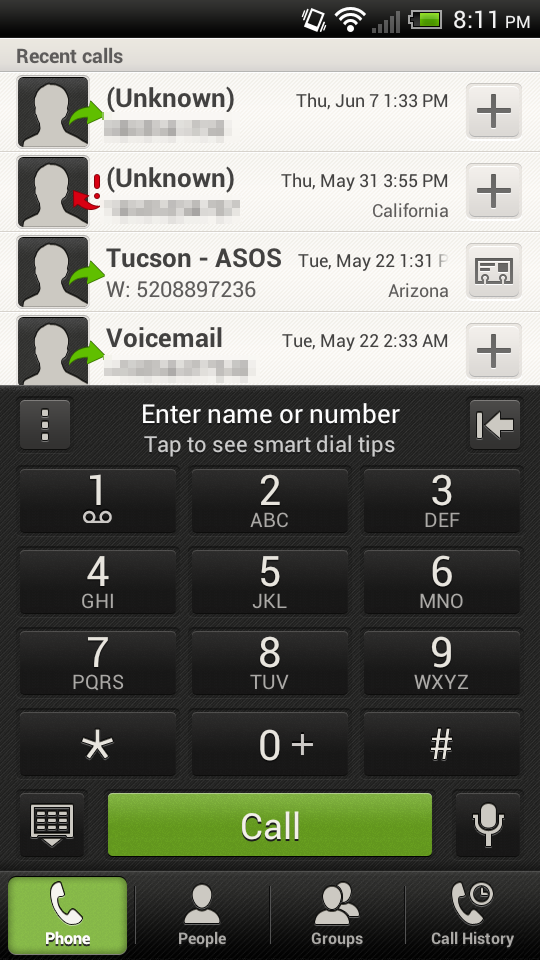
Probably the most controversial thing is the task switcher, which deviates a lot from the stock ICS switcher by including a 3D perspective preview. Apps can then be dismissed by swiping them up, just like WebOS cards. The current controversy is that HTC’s task scheduler seems a bit aggressive about closing background tasks that aren’t present in the notifications shade. I have seen it kill some things a bit quickly (I had speedtest running in the background get killed a few times, but not Google Music, which would be infuriating) but nothing that’s been experience-killing.
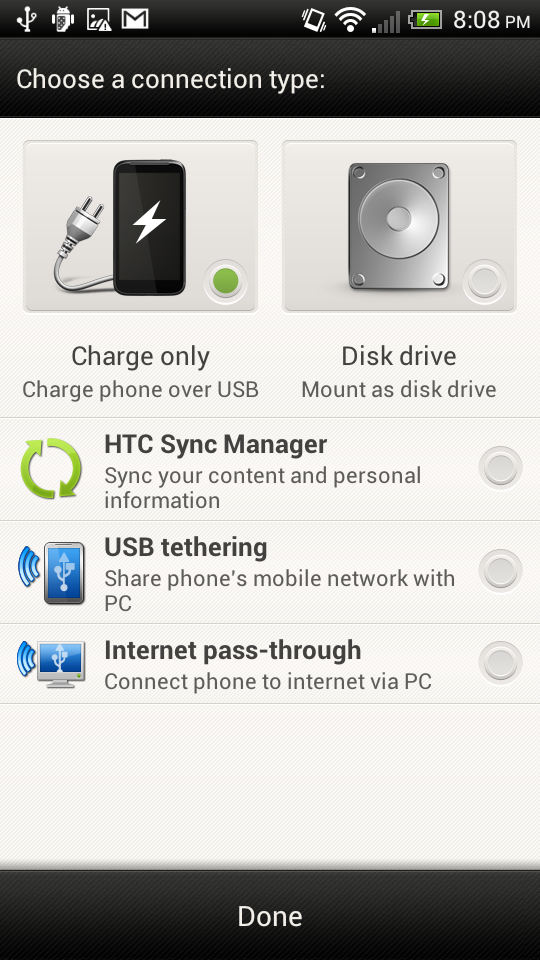

Lastly I think it’s worth noting that HTC has gone with the traditional mass USB storage (disk drive) behavior instead of MTP. This is the same across the HTC Ones, with the exception of the EVO 4G LTE (which I’ll talk about in that review). I find it interesting that everyone seems to have gone this way instead of using MTP which Google clearly is pushing.
Filesystem Size Used Free Blksize/dev 342M 136K 342M 4096/system 1007M 875M 132M 4096/data 2G 170M 2G 4096/cache 251M 4M 247M 4096/devlog 19M 14M 5M 4096/mnt/asec 342M 0K 342M 4096/mnt/obb 342M 0K 342M 4096/firmware_radio 199M 33M 166M 4096/firmware_q6 199M 5M 193M 4096/firmware_wcnss 4M 1M 3M 2048/data/secure/data 342M 0K 342M 4096/mnt/sdcard 9G 194M 9G 32768
If you look at df you’ll see that the 16 GB of NAND ends up being exposed as a 9GB / 2GB split for the internal sdcard partition and data (apps) respectively. The rest of that 5GB is absorbed into other housekeeping. Again, the HTC One S has no expandable microSD storage.










97 Comments
View All Comments
metafor - Tuesday, July 17, 2012 - link
The screens on just about every Android phone of recent has been at least ~40% larger. Add to that the fact that a bunch of them are AMOLED and you pretty much have your answer.sigmatau - Tuesday, July 17, 2012 - link
Bingo, the biggest contribution to battery life is a function of the size.The iphone having the smallest screen of all smartphones on the list should have great battery life. They should be up there with the razr.
Do people really think that their 15" monitor uses the same amount of power as a 55" LCD TV? There is a huge difference.
name99 - Tuesday, July 17, 2012 - link
"Do people really think that their 15" monitor uses the same amount of power as a 55" LCD TV? There is a huge difference."
Don't be too sure of this without checking.
I have a (new) 46" LCD TV and a (four years old or so) 20" monitor, both 1080p. The monitor very clearly runs a lot hotter than the TV, and the specs say it has a higher power draw.
Point is --- engineering details still makes a big difference.
Death666Angel - Thursday, July 19, 2012 - link
You are most likely comparing CCFL vs LED. These phones all have the same background light when they use LCDs.lilmoe - Tuesday, July 17, 2012 - link
it's not only about hardware. iOS isn't as powerful as android, nor does it support full multi-tasking like Android does. when you're browsing on iOS, for example, everything else is in "sleep-mode", while in android, everything else is still running.Android VS WP7 show a clear picture. the Lumia 900 lasts longer than any Android phone using the same SoC, even with LTE turned on.
Android is a double edged sword, it's powerful, yet it can be very power consuming, because of all the processes that work in the background.
Samus - Wednesday, July 18, 2012 - link
1) The iPhone is still a 3G (not even 3.5G) device2) The iPhone has a 3.5" screen, opposed to most Android phones having 4"+ screens.
Obviously iPhone is going to have better battery life.
IKeelU - Tuesday, July 17, 2012 - link
The main differentiator is actually the software. Android devices will always have a very hard time catching up simply because iOS is ridiculously optimized compared to Android.amdwilliam1985 - Tuesday, July 17, 2012 - link
You mean ridiculously limited right?shaolin95 - Wednesday, July 18, 2012 - link
Indeed!apple fanboys have their own replacement words as you noticed :D
Connoisseur - Tuesday, July 17, 2012 - link
Umm... 3.5" screen versus >4" screen? LCD vs SAMOLED? I'm assuming the major differences in battery really just come down to the type and size of screen used. The only way they could do an apples to apples comparison was if someone made a 3.5" LCD Android 4.0 smartphone with a comparable battery to the Iphone 4S.These phones also have DC-HSPA/LTE built in which are probably more power hungry than the 4S HSPA+ baseband.
In short - Higher performance = higher power consumption